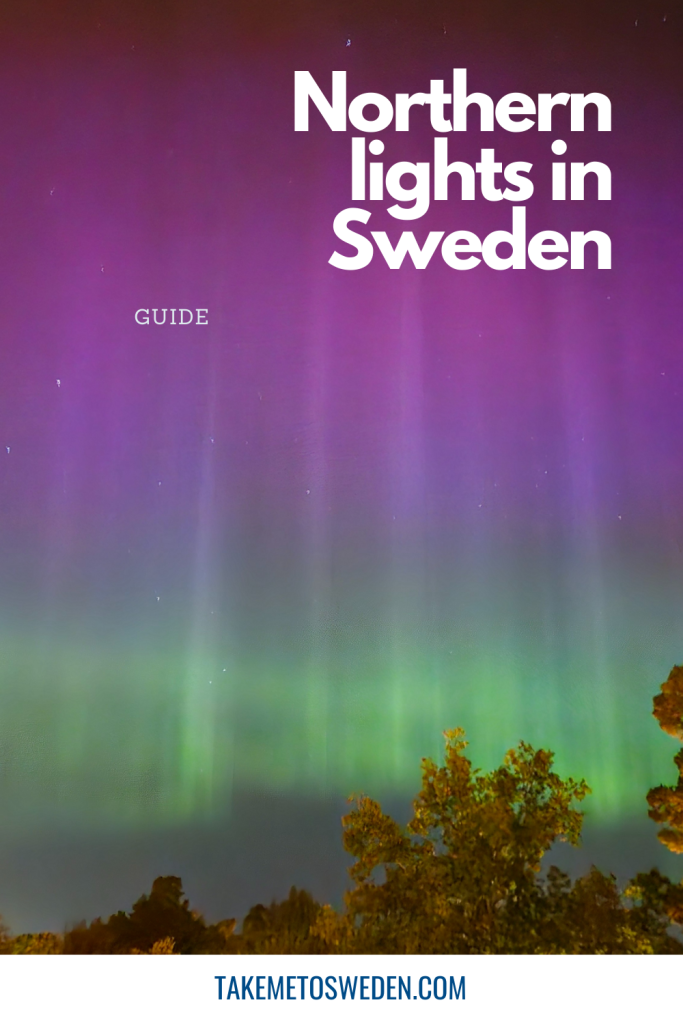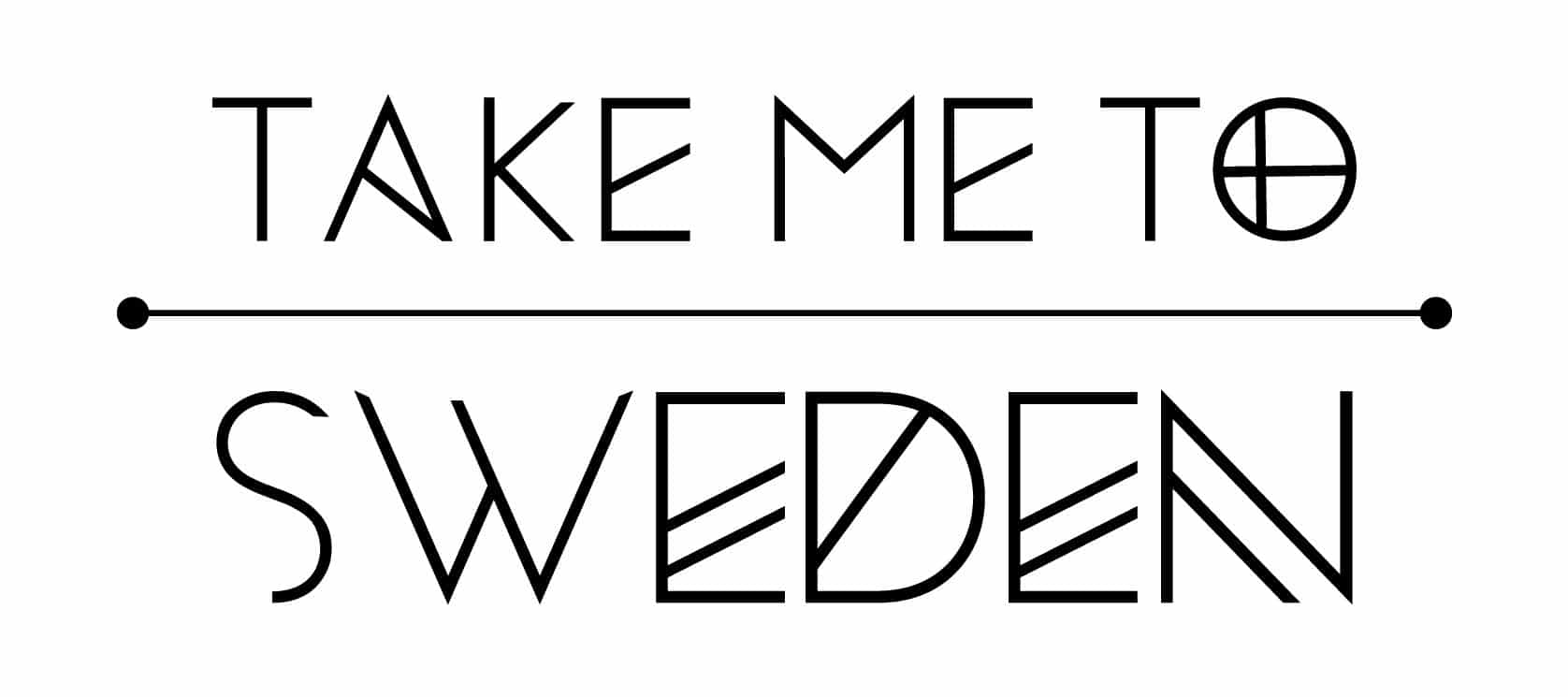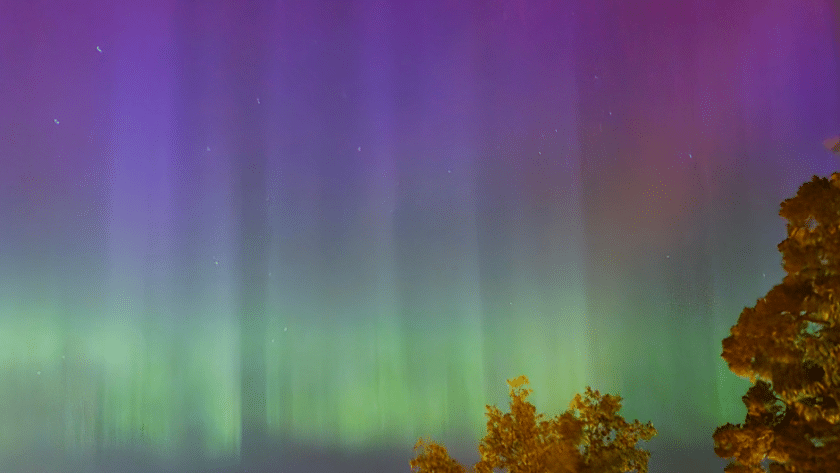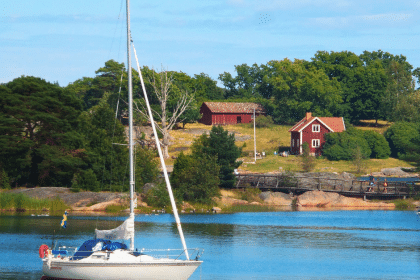Imagine standing beneath a sky awash with vibrant hues of green, purple, and sometimes pink, dancing across the night. This mesmerising spectacle, known as the Northern Lights, or Aurora Borealis, is one of nature’s most captivating displays and a popular item on people’s bucket lists. If you’re lucky enough to witness it, it’s an experience you’ll never forget. Sweden, with its vast, dark skies and long winter nights, offers some of the best chances to witness this celestial ballet. Here’s everything you need to know to plan the perfect Northern Lights adventure in Sweden.
What are the Northern Lights?
The Northern Lights occur when electrically charged particles from the sun collide with gases in the Earth’s atmosphere. These particles, travelling at incredible speeds (up to 700 km/s), interact with oxygen and nitrogen, creating a glowing sky in various colours.
Chasing the northern lights, my personal story
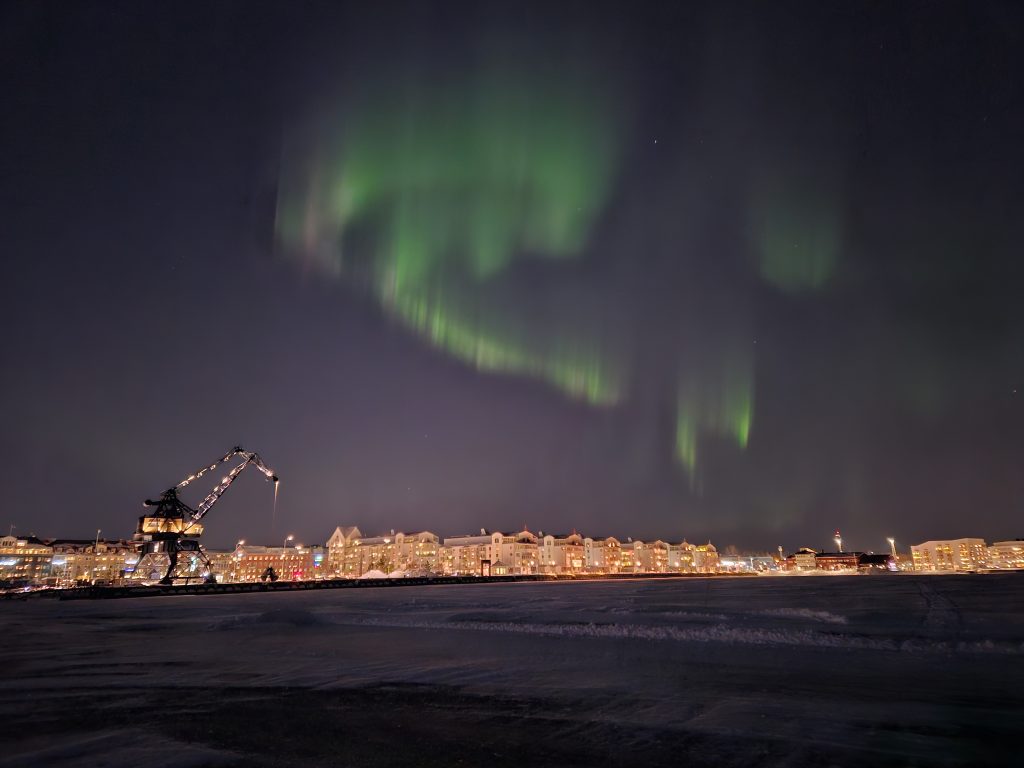
It took me 8 trips to the north of Scandinavia before being lucky enough to see Lady Aurora in full force. While I did see a vague green line at the horizon during my first attempt, when visiting Rovaniemi in 2015, I wanted the lights to dance to really be able to check it of my bucket list.
Eventually I got lucky in Luleå, in Swedish Lapland, december 2023. I always believed I had to go to a dark spot but when I first saw the northern lights, it surprised me on a late afternoon just in the streets behind the corner of my hotel, amidst the city lights. A real pinch me moment!
Later that evening and the 3 consecutive nights, I saw more northern lights. The second night was absolutely crazy. It was everywhere! I spent hours on the frozen harbour of the city, taking hundreds of pictures. Incredible beautiful memories.
Who would have thought that, hardly 6 months later, I would see the aurora borealis for the second time. This time on the beach in my hometown in Belgium. Later that night, I even saw it from my own street. How exceptional!
And end of August 2024 I was lucky once more when, just before heading to bed, I casually checked the aurora app and saw a very small chance. I decided to get out in my pyjamas and point my camera to the north. To my surprise, I saw the northern lights! A little later it was also visible for the naked eye, despite all the street lights in Stockholm. I felt so lucky!
I have to say, chasing the northern lights is a little addictive. Can’t wait to see them again. Fingers crossed!
Best places to see the northern lights in Sweden
While you might get lucky and catch a glimpse of the Northern Lights anywhere in Sweden, the further north you go, the better your chances. The Arctic Circle and regions close to it offer the most reliable opportunities.
- Abisko National Park: Known globally as one of the top spots to view the Northern Lights, Abisko benefits from a unique microclimate that often provides clear skies, perfect for aurora hunting. Visit the Aurora Sky Station for panoramic views of the shimmering lights.
- Kiruna: As Sweden’s northernmost city, Kiruna is a popular destination for Aurora chasers. Its remoteness and low light pollution make it ideal for spotting the lights. While you’re there, why not combine your adventure with a stay at the famous Ice Hotel?
- Swedish Lapland: This vast region is a treasure trove for Northern Lights seekers. Towns like Jokkmokk, Jukkasjärvi, and Porjus offer plenty of secluded spots away from artificial lights, increasing your chances of a magical night under the auroras.
When to go
Timing is crucial when chasing the Northern Lights. While northern lights can happen all year round, it has to be dark enough for the lights to be visible. Therefore, the best period to see the northern lights in Sweden is between late August and early April. With November to March providing long, dark nights, which are essential for Aurora spotting.
As soon as the sun sets, the chances of seeing the lights rise. My experience is that between 22:30 and midnight, the chances are highest. Although the first time I saw the lights in Luleå, it was 15:30 (in December so very short time of daylight). Be patient, you don’t want to give up to early to wake up the next day seeing all those wonderful pictures on social media!
It’s also important to note that we’re currently in a phase called the solar maximum, a period of heightened solar activity that occurs roughly every 11 years. This increases the number of charged particles reaching earth, leading to more frequent and intense displays. The current solar maximum is expected to last until 2024-2025, making now a fantastic time to go Aurora hunting. The next solar maximum is expected to be in 2035-2036.
Northern lights tours in Sweden
While you don’t need to book a tour to see the northern lights, the guides know the region and the best spots for spotting the northern lights. On top of that they can give you photography tips, answer questions on this natural phenomenon and extra’s are often included like transfers, fika by the campfire or a dinner.
Here you can find some tours that might interest you.
Tips for a successful Northern Lights hunt
Here are some expert tips to help maximise your chances of witnessing this otherworldly phenomenon:
- Head to dark locations: To see the Northern Lights in their full glory, avoid city lights and find a dark spot. The darker the sky, the better your chances. Remote areas in Swedish Lapland are perfect for this. But this doesn’t mean you can’t see the lights when it is not fully dark. It might look less intense or more difficult to spot.
Also important: find a spot with a free horizon, certainly to the north but very strong aurora can also be south of where you are, especially if you’e up north. - Keep an eye on the forecast: There are several apps, like My Aurora Forecast or Hello Aurora, that can help you track solar activity and provide real-time alerts for potential Aurora sightings. These apps also offer details on solar winds and magnetic fields, essential for predicting the lights. If you speak a little bit of Swedish the Facebook group Norrsken is also very interesting. You can look for local groups as well.
Apart from the aurora apps, it is also interesting to check the weather apps. You’ll need cloudless skies or at least skies with hardly any clouds! - Watch the sky for long periods: The Northern Lights are unpredictable, and patience is key. Sometimes the display starts faint and intensifies over time, so it’s worth sticking around for a few hours. Also, give your eyes the chance to adapt to the darkness. Avoid watching your screens too much.
- Understand the elements:
- A solar wind speed above 400 km/h increases your chances.
- The magnetic fields (Bz in nT) should be negative for at least an hour to allow the Aurora to form. The more negative, the greater the chances to see the northern lights at more southern latitudes.
- A higher Bt (strength of the magnetic field) also improves your odds.
- Use a camera: Sometimes the Northern Lights are too faint for the naked eye but show up brilliantly in photos. Long-exposure settings on your camera or smartphone can reveal colours that your eyes can’t see, such as purples and deep blues. And don’t forget to bring your tripod, a remote control (to avoid blurry pictures) and extra batteries or a powerbank, that you keep close to your body – the cold will make your batteries die faster.
- Bring a compass and look north – but be aware that it could be south of you as well. I had this on the second night in Luleå.
- Dress warmly: Swedish winters are cold! Make sure you’re well-prepared with warm layers (think windproof as well), as you may be outside for hours waiting for the lights. Bring a woolen blanket and some warm drinks. I always bring 2 pairs of gloves: a thin one in silk that I don’t take of and make it possible for me to handle my camera; and a thick pair of wind/waterproof mittens.
Also, catch up on sleep before or after the aurora hunting. - Be mindful of moonlight: A full moon can diminish your chances, as its brightness washes out the auroras. For the best view, try to plan your trip during the new moon phase.
- Consider a guided tour: Local guides can increase your chances of spotting the Northern Lights and provide valuable insights.
Fun fact: the northern lights aren’t always visible for the eye
The Northern Lights aren’t always visible to the naked eye, especially during weaker displays. What may look like faint, milky clouds can, in fact, be the auroras. Use your camera or phone to take a photo; if the “clouds” turn green in the picture, you’re looking at the Northern Lights!
The science behind the magic
The intensity of the Northern Lights is closely tied to solar activity. Charged particles from the sun are shot into space, and when they collide with the Earth’s atmosphere, they release energy, producing the Aurora. The stronger the solar storm, the more intense and vivid the lights become.
The colours and intensity depend on the type of gas involved and the speed of the charged particles. A strong solar wind, for instance, can intensify the display, making it visible to the naked eye.
- Oxygen: Emits the common green and yellow colours when hit by electrons.
- Nitrogen: Produces blue or red tones, and occasionally pink.
- Neon: Can generate orange hues.
How to photograph the northern lights?
I have to be honest, I usually just point and shoot with my smartphone, no special settings. I have a Samsung S23 and it handles dark situations quite nicely. So yes, you can photograph the northern lights with a smartphone. Use the night mode, use a tripod and set the timer to 2 seconds to avoid shaking and blurry pictures. All pictures in this post have been taken with my Samsung.
Are you interested in photographing the northern lights with a camera? Or do you want to know more about filming the northern lights with a GoPro? Let me know in the comments and I’ll write another article about it!
Have you ever seen Lady Aurora?
Pin for later
Save this article to Pinterest for later reference!
